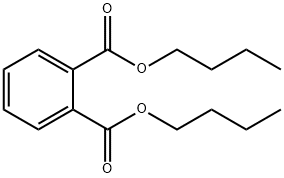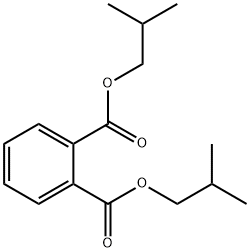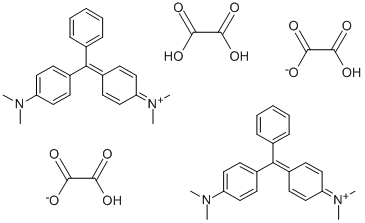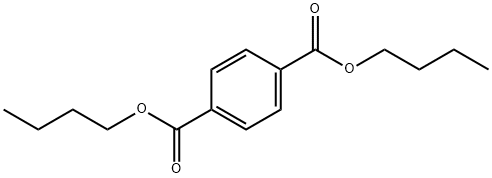Dibutyl oxalate
- CAS NO.:2050-60-4
- Empirical Formula: C10H18O4
- Molecular Weight: 202.25
- MDL number: MFCD00009442
- EINECS: 218-092-8
- SAFETY DATA SHEET (SDS)
- Update Date: 2025-12-17 09:50:35

What is Dibutyl oxalate?
Chemical properties
clear colourless liquid
The Uses of Dibutyl oxalate
Dibutyl oxalate has been suggested for use in perfumes as a solvent blender, but does not seem to offer advantages over odorless or low-odor solvents conventionally used.
Definition
ChEBI: Oxalic acid dibutyl ester is a dicarboxylic acid.
General Description
The rate of dibutyl oxalate degradation in ruminal contents from adapted and non-adapted animals was studied.
Synthesis
Dibutyl oxalate is produced from n-Butanol and Oxalic acid by direct esterification.
Properties of Dibutyl oxalate
| Melting point: | −29 °C(lit.) |
| Boiling point: | 239-240 °C(lit.) |
| Density | 0.986 g/mL at 25 °C(lit.) |
| refractive index | n |
| Flash point: | 228 °F |
| Water Solubility | Practically insoluble in water |
| solubility | Insoluble in water, soluble in alcohol and oils. |
| form | clear liquid |
| color | Colorless to Almost colorless |
| Odor | Faint, nondescript odor between fruity and wincy, rather pleasant but weak. |
| BRN | 1776065 |
| CAS DataBase Reference | 2050-60-4(CAS DataBase Reference) |
| NIST Chemistry Reference | Ethanedioic acid, dibutyl ester(2050-60-4) |
| EPA Substance Registry System | Ethanedioic acid, dibutyl ester (2050-60-4) |
Safety information for Dibutyl oxalate
| Signal word | Danger |
| Pictogram(s) |
 Corrosion Corrosives GHS05  Exclamation Mark Irritant GHS07 |
| GHS Hazard Statements |
H315:Skin corrosion/irritation H317:Sensitisation, Skin H318:Serious eye damage/eye irritation H335:Specific target organ toxicity, single exposure;Respiratory tract irritation |
| Precautionary Statement Codes |
P261:Avoid breathing dust/fume/gas/mist/vapours/spray. P280:Wear protective gloves/protective clothing/eye protection/face protection. P305+P351+P338:IF IN EYES: Rinse cautiously with water for several minutes. Remove contact lenses, if present and easy to do. Continuerinsing. |
Computed Descriptors for Dibutyl oxalate
New Products
Indole Methyl Resin tert-butyl 9-methoxy-3-azaspiro[5.5]undecane-3-carboxylate Boc-His(Boc)-OH 2-CTC Resin 4-Chloro-7-tosy1-7Hpyrrolo[2,3-d]pyrimidine 5,7-Dibromo-1H-indole 2,5-dichloro-N-hydroxy-4,6-dimethylpyridine-3-carboximidamide 2,2-Dimethoxy-7-azaspiro[3.5]nonane hydrochloride 4-chloromethyl-5-methyl-1,3-dioxol-2-one (DMDO-Cl) R-2-BENZYLOXY PROPIONIC ACID 1,1’-CARBONYLDIIMIDAZOLE 1,1’-CARBONYLDI (1,2-4 TRIAZOLE) N-METHYL INDAZOLE-3-CARBOXYLIC ACID 4-((2-hydroxyethyl)thio)benzoic acid 1-(TERT-BUTOXYCARBONYL)-2-PYRROLIDINONE Methyl 6-methylnicotinate 3-Pyridineacrylic acid tert-Butyl carbazate TETRAHYDRO-2H-PYRAN-3-OL 2-((4-morpholinophenylamino) (methylthio) methylene) malononitrile 3-(4-morpholinophenylamino)-5-amino-1H-pyrazole-4-carbonitrile 2,4-dihydroxybenzaldehyde 1,3-Diethyl-1,3-Diphenylurea Methyl 2-methylquinoline-6-carboxylateRelated products of tetrahydrofuran








You may like
-
 Dibutyl Oxalate CAS 2050-60-4View Details
Dibutyl Oxalate CAS 2050-60-4View Details
2050-60-4 -
 Pyridine 99.5% HPLC /UV SpectroscopyView Details
Pyridine 99.5% HPLC /UV SpectroscopyView Details
110-86-1 -
 Guanine , 99%View Details
Guanine , 99%View Details
73-40-5 -
 Piperazine Spot supply, best priceView Details
Piperazine Spot supply, best priceView Details
110-85-0 -
 Dibutyl PhthalateView Details
Dibutyl PhthalateView Details
84-74-2 -
 Imidazole Spot supply, competitive priceView Details
Imidazole Spot supply, competitive priceView Details
288-32-4 -
 Octadecyl 3-(3,5-di-tert-butyl-4-hydroxyphenyl)propionate 98% (GC)View Details
Octadecyl 3-(3,5-di-tert-butyl-4-hydroxyphenyl)propionate 98% (GC)View Details
2082-79-3 -
 Thiourea 99% ARView Details
Thiourea 99% ARView Details
62-56-6
Statement: All products displayed on this website are only used for non medical purposes such as industrial applications or scientific research, and cannot be used for clinical diagnosis or treatment of humans or animals. They are not medicinal or edible.
